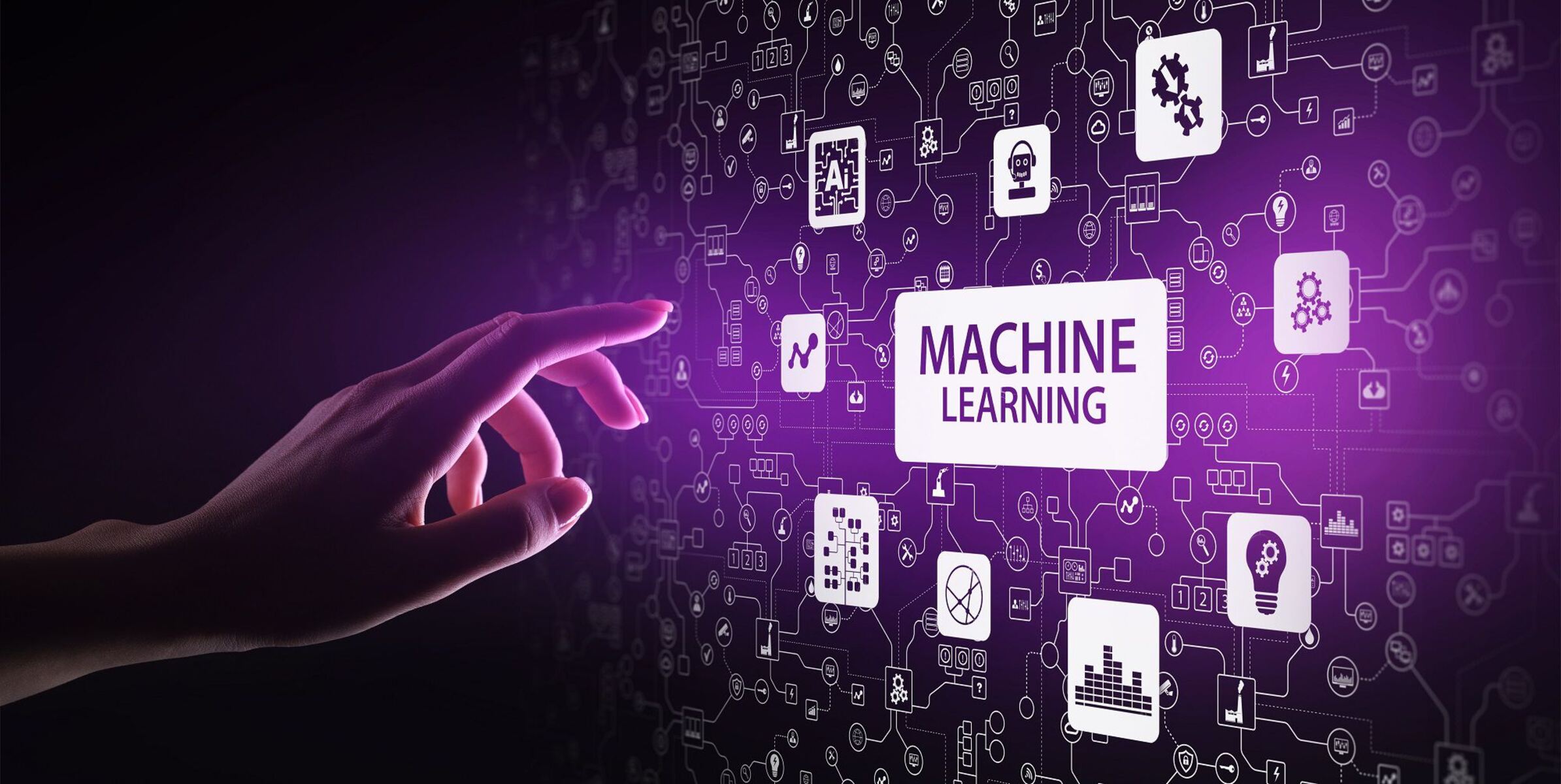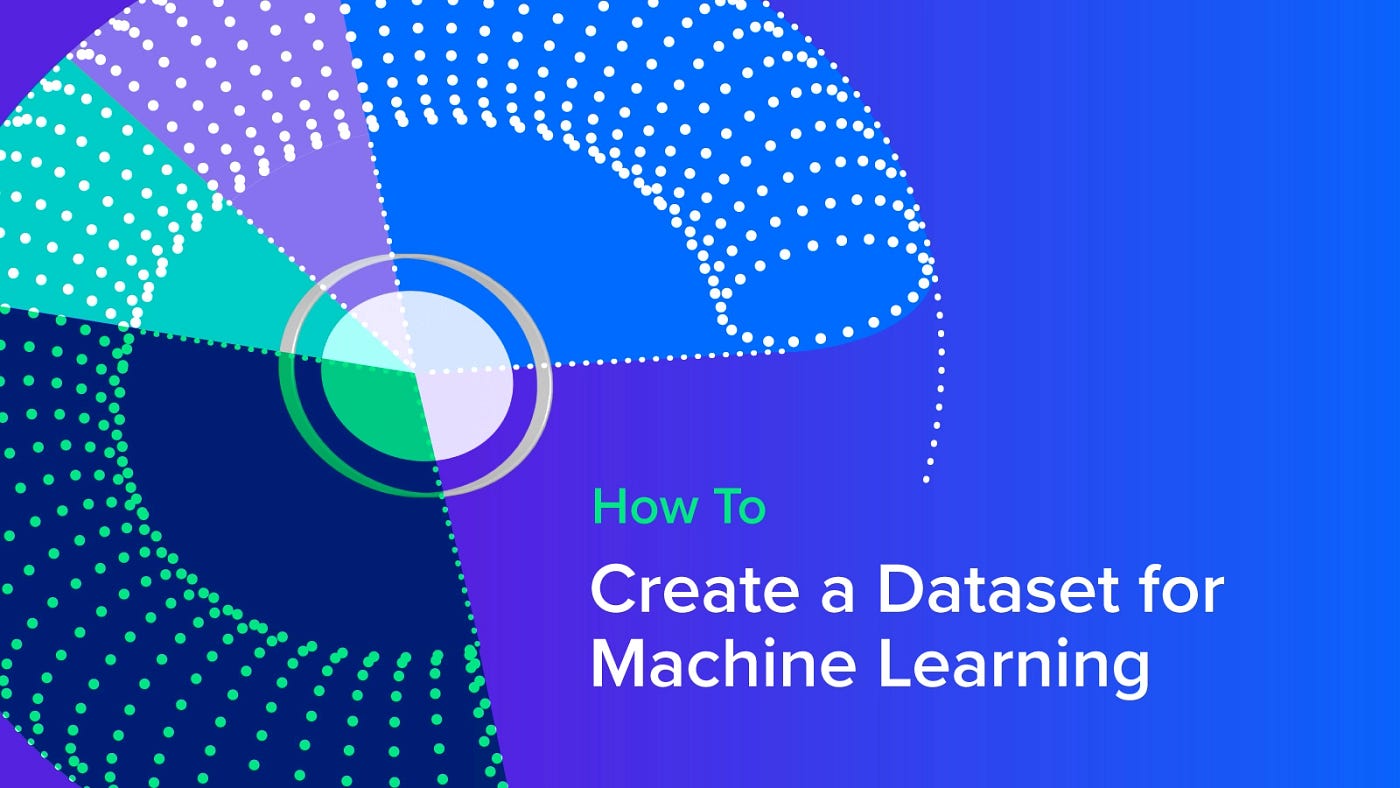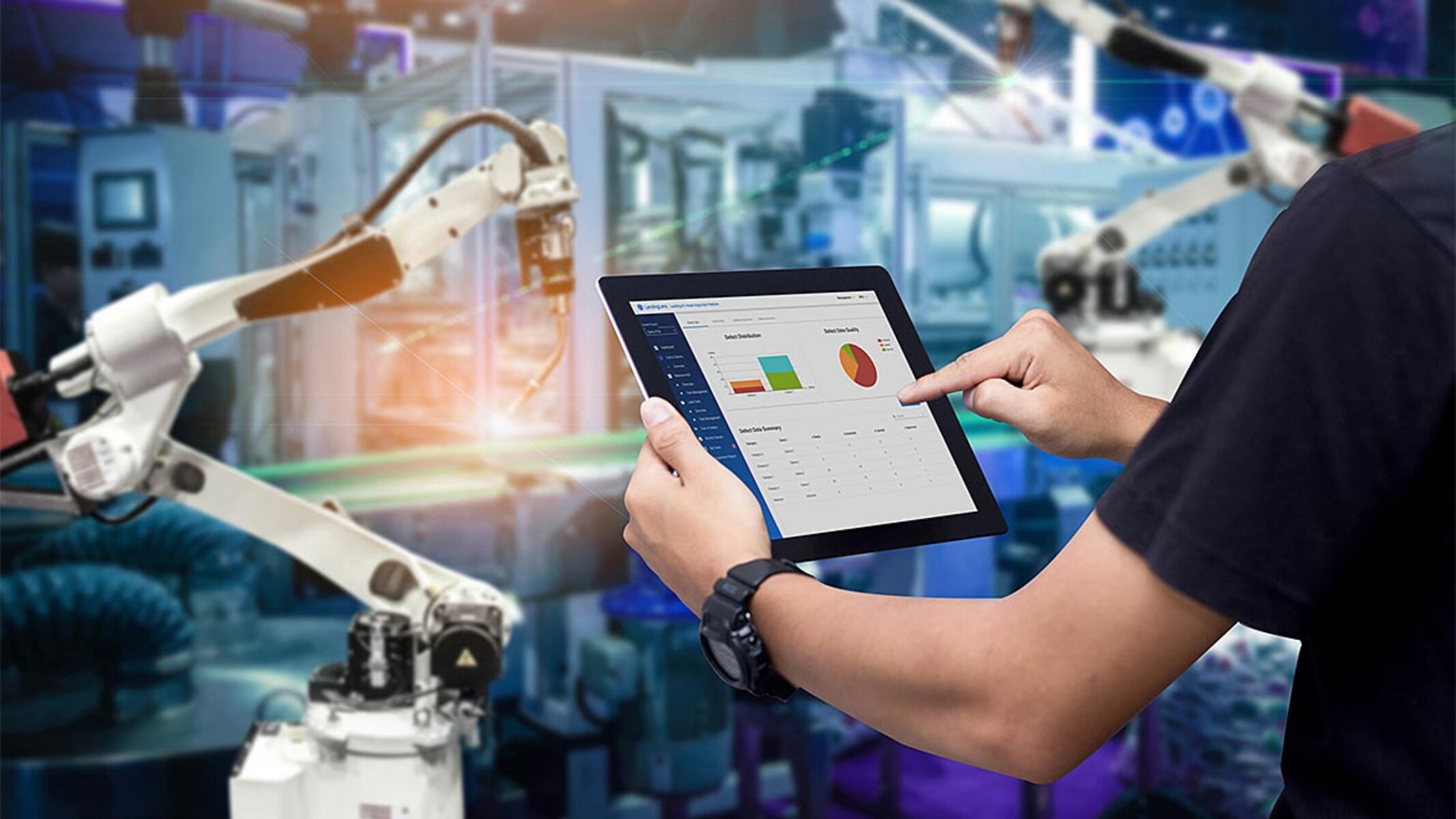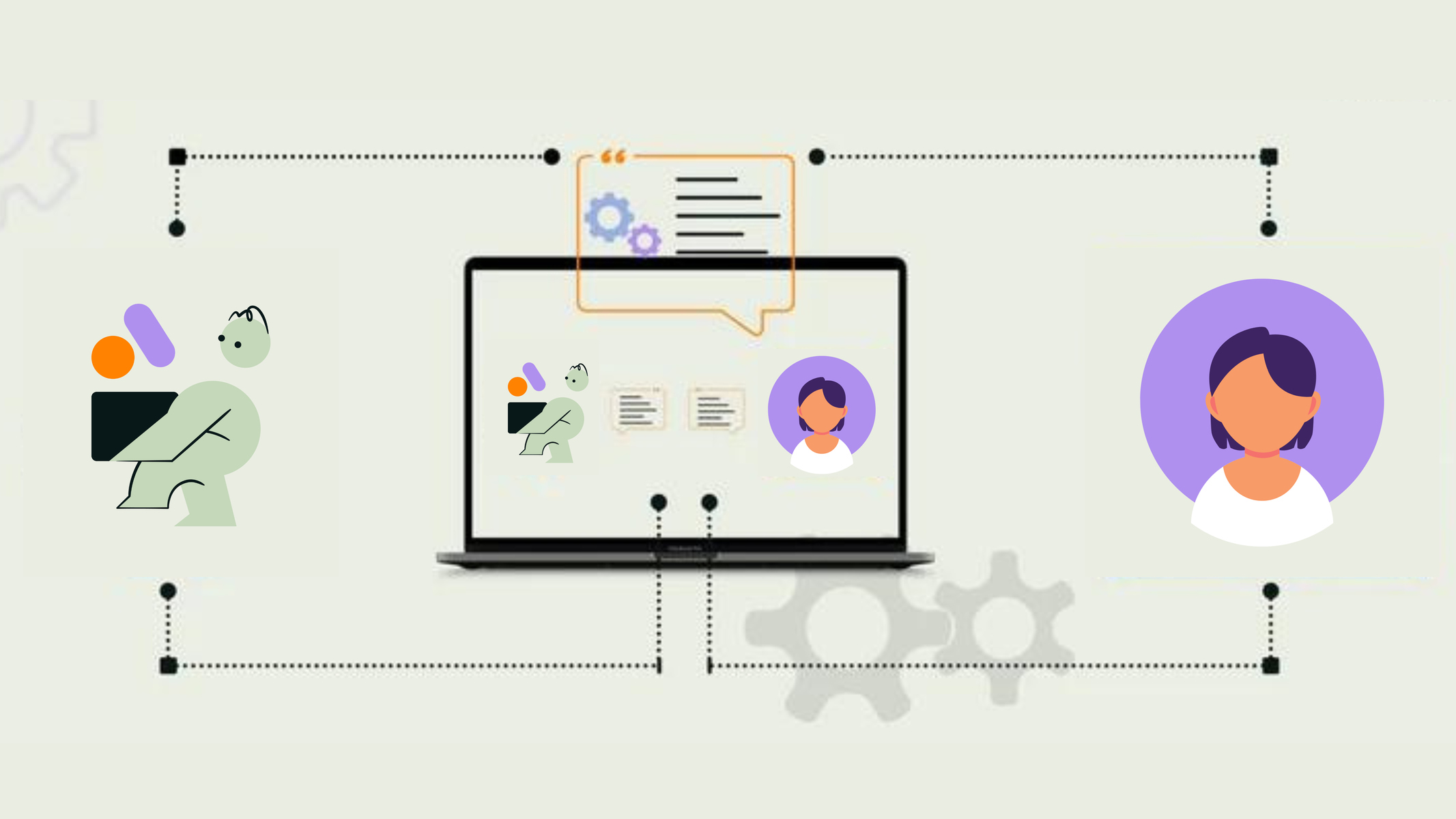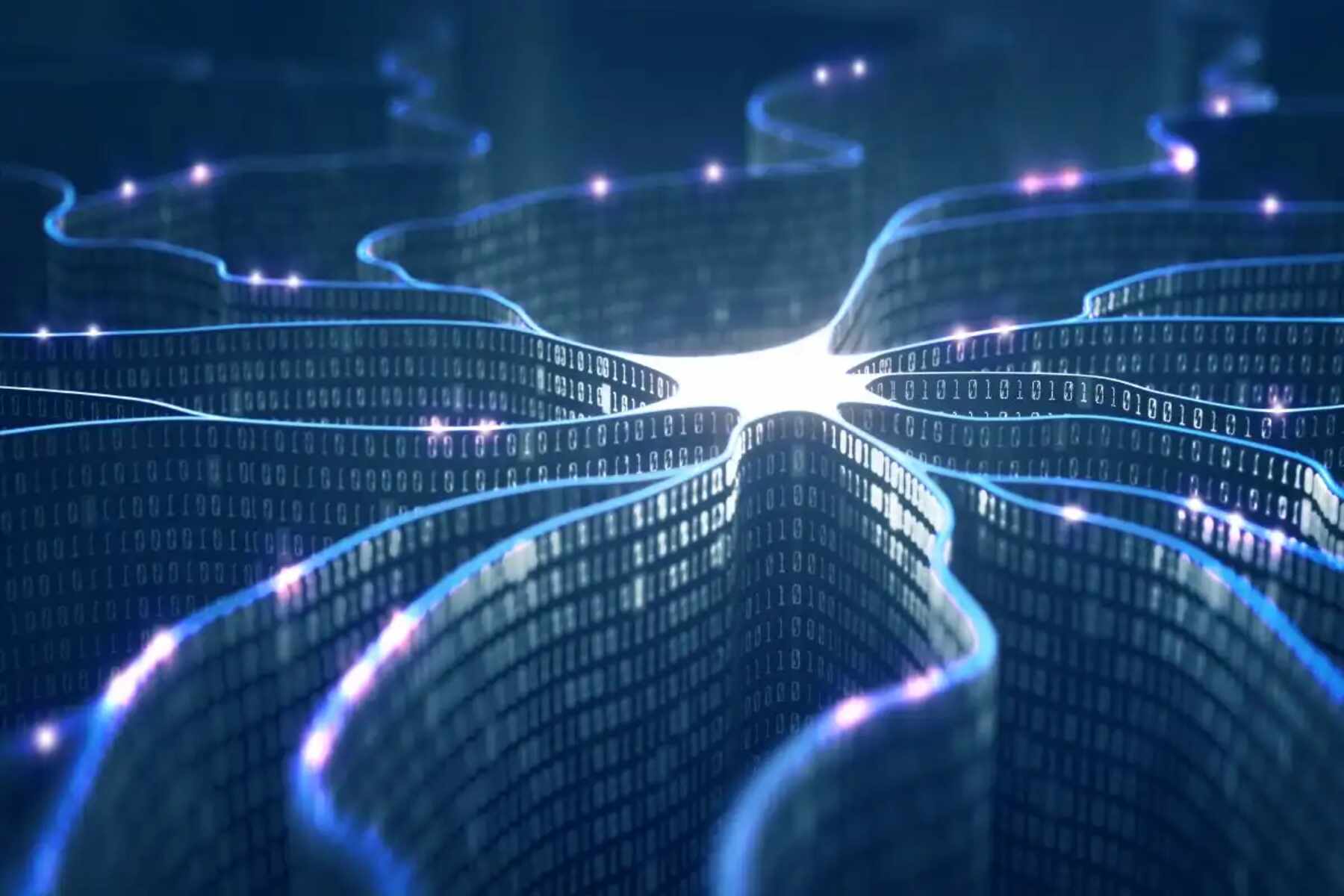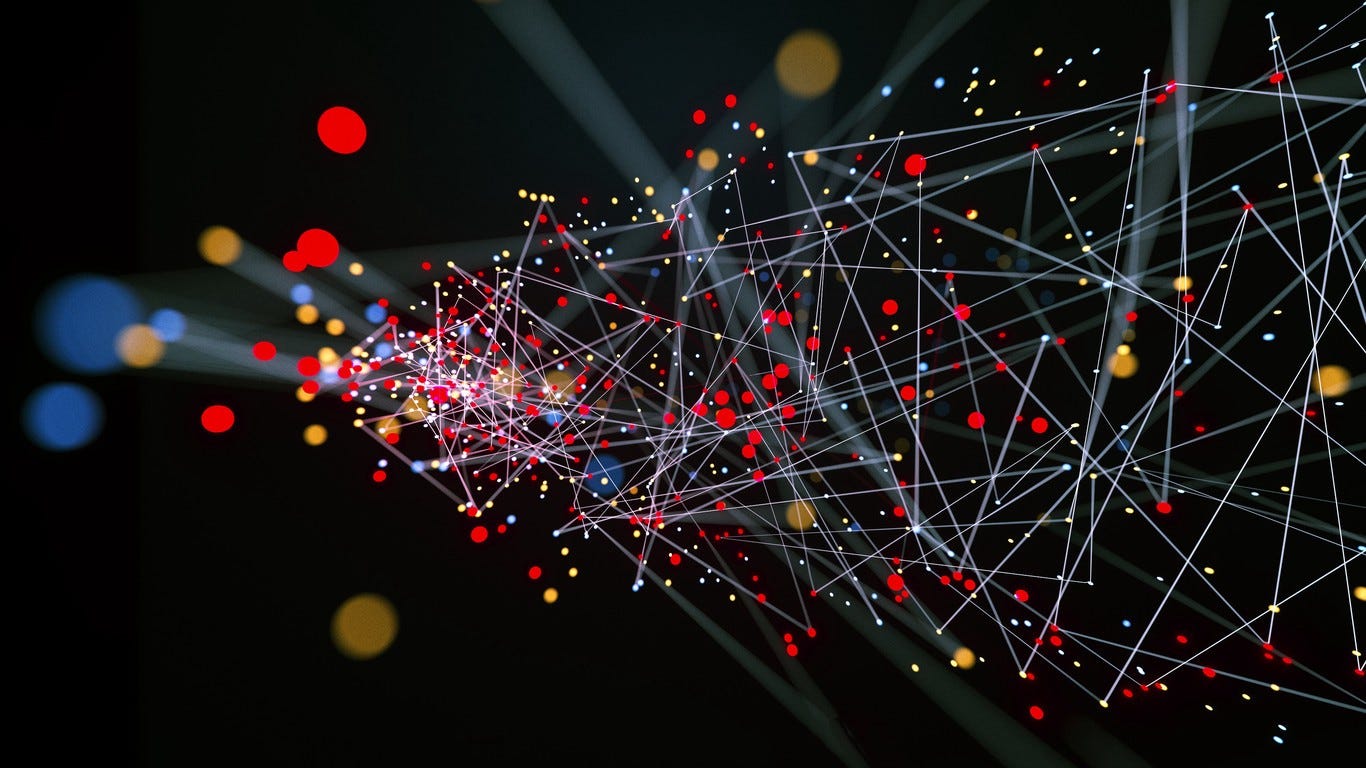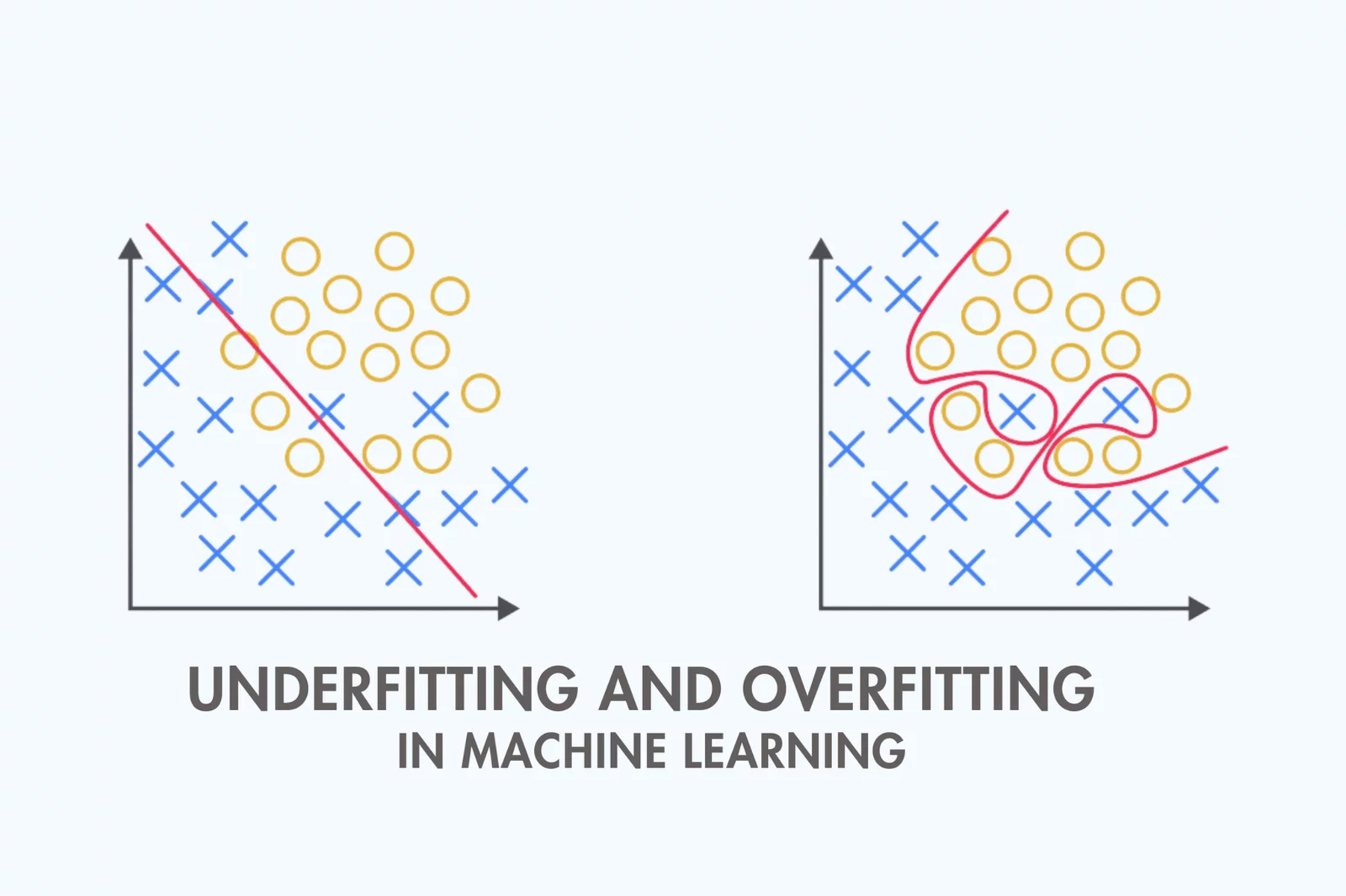Introduction
Data augmentation is a fundamental technique in the field of machine learning that is used to address the challenge of limited training data. It involves creating synthetic data samples by applying various transformations to the existing dataset. By artificially expanding the dataset, data augmentation helps improve the generalization and robustness of machine learning models.
In the era of big data, it might seem counterintuitive that data scarcity remains a challenge. However, in many real-world scenarios, gathering a large labeled dataset can be time-consuming, expensive, or simply impossible. This is particularly true in specialized domains such as medical imaging, video analysis, or rare event detection. In such cases, machine learning models trained on limited datasets often struggle to achieve satisfactory performance or fail to generalize well to new, unseen data.
Data augmentation provides an effective solution to mitigate the impact of data scarcity. By applying a variety of transformations, including geometric manipulations, color and contrast adjustments, and noise addition, data augmentation can significantly increase the size of the dataset without the need for additional data collection efforts. This artificial expansion not only boosts the model’s ability to generalize but also helps it to learn more invariant and robust representations.
Moreover, data augmentation can also help address the problem of class imbalance, where certain classes have considerably fewer samples than others. By generating new samples for underrepresented classes, data augmentation rebalances the dataset, allowing the model to learn from a more representative distribution of data. This, in turn, improves the model’s ability to correctly classify and handle all classes with better accuracy and fairness.
In this article, we will explore the various types of data augmentation techniques commonly used in machine learning, discuss their benefits, and highlight the challenges and considerations associated with implementing data augmentation strategies. By understanding and incorporating these techniques effectively, researchers and practitioners can unlock the full potential of data augmentation to improve the performance and reliability of machine learning models in a wide range of applications.
Definition of Data Augmentation
Data augmentation refers to a set of techniques employed in machine learning to artificially expand the training dataset by creating new samples through transformations and modifications of the existing data. The primary objective of data augmentation is to provide the machine learning model with a more diverse and comprehensive set of examples, enabling it to generalize better and improve its performance on unseen data.
When working with a limited amount of labeled data, data augmentation offers a way to overcome the challenges of overfitting and underfitting. Overfitting occurs when a model becomes too specialized in the training data, resulting in poor performance on new data. Underfitting, on the other hand, happens when a model fails to capture the complex patterns and variations present in the data.
With data augmentation, various modifications are applied to the original data samples to create new instances that retain the same class labels as the original ones. These modifications include geometric transformations such as rotation, scaling, and flipping, as well as pixel-level modifications like cropping, resizing, or adding noise. Furthermore, color transformations, such as adjusting brightness, contrast, saturation, and hue, can also be used to generate novel samples.
The augmented data is typically generated on the fly during the training process, ensuring that the model never encounters the exact same sample twice. By exposing the model to a more diverse range of examples, data augmentation helps to improve its ability to generalize and make accurate predictions on novel data points.
Data augmentation is particularly useful in computer vision tasks, such as image classification, object detection, and semantic segmentation. However, it can also be applied to other domains, including natural language processing and speech recognition, to enhance the performance of machine learning models.
It is important to note that data augmentation should be applied judiciously and with domain-specific considerations. While data augmentation can enhance the generalization capabilities of a model, excessive or inappropriate augmentation can introduce artificial patterns or distortions that may hinder the model’s performance. Therefore, the choice and combination of augmentation techniques should be carefully evaluated and tailored to the specific task and dataset at hand.
Importance of Data Augmentation in Machine Learning
Data augmentation plays a crucial role in machine learning by addressing the challenges of limited training data and improving the performance and generalization capabilities of models. Here, we will discuss the significance of data augmentation in machine learning tasks.
One of the primary reasons for the importance of data augmentation is the limited availability of labeled training data. In many real-world scenarios, it is expensive, time-consuming, or impractical to collect a large and diverse dataset. This scarcity of data can hinder the ability of machine learning models to learn meaningful and robust representations of the underlying patterns. Data augmentation helps alleviate this problem by artificially expanding the dataset, providing more instances for the model to learn from.
By introducing variations through data augmentation, machine learning models become more robust to changes in the input data. The augmented data exposes the model to different perspectives, viewpoints, and lighting conditions, enabling it to generalize better to new and unseen samples. This ability to handle diverse input variations is critical in applications such as object recognition, where objects may appear in different orientations, scales, and illumination settings.
Another key benefit of data augmentation is its ability to address the issue of class imbalance. In many classification tasks, certain classes may have significantly fewer samples compared to others, leading to biased performance and reduced accuracy for the underrepresented classes. Data augmentation can generate additional samples for the minority classes, rebalancing the dataset and enabling the model to learn from a more representative distribution of data. This helps improve accuracy, and the model becomes more adept at correctly classifying all classes, including the previously underrepresented ones.
Data augmentation also helps in reducing overfitting, a common problem in machine learning. When models are trained on limited data, they may memorize the training samples instead of generalizing the patterns. This results in poor performance on unseen data. Data augmentation tackles overfitting by introducing artificial variations, making it harder for the model to memorize specific instances. By forcing the model to learn more invariant representations, data augmentation improves the model’s ability to generalize and make accurate predictions on new data, leading to better performance.
Furthermore, data augmentation can aid in the regularization of machine learning models. Regularization techniques such as dropout and weight decay help prevent overfitting by adding constraints to the model’s parameters. Data augmentation acts as another form of regularization by adding noise and introducing variations in the training data, reducing the chances of the model fitting the noise in the data and encouraging it to learn more robust and meaningful representations.
Overall, data augmentation plays a pivotal role in machine learning by expanding the training dataset, improving generalization, addressing class imbalances, reducing overfitting, and aiding regularization. By effectively utilizing data augmentation techniques, researchers and practitioners can enhance the performance and reliability of machine learning models across various domains and applications.
Types of Data Augmentation Techniques
Data augmentation encompasses a wide range of techniques that can be applied to diversify and expand the training dataset. These techniques introduce various transformations and modifications to the existing data, creating new samples with preserved class labels. Here, we will explore some commonly used data augmentation techniques in machine learning.
1. Geometric Transformations: Geometric transformations involve modifying the spatial arrangement of the data samples. This includes rotation, scaling, flipping, and translation. For example, in image data, rotating an image by a few degrees or flipping it horizontally can create new samples that provide a different perspective or viewpoint. Geometric transformations are particularly useful in tasks such as object detection and image classification.
2. Image Flips and Rotations: Flipping images horizontally or vertically can be a simple yet effective data augmentation technique. By flipping images, the model is exposed to variations in orientation and mirroring, improving its ability to handle real-world scenarios where objects may appear differently.
3. Pixel-level Modifications: Pixel-level modifications involve altering individual pixels in the image. This includes techniques like cropping, resizing, and padding. Cropping an image extracts a specific region of interest, providing a different view of the object. Resizing and padding help to handle images of different sizes and aspect ratios. These modifications can be useful in tasks like image segmentation and object recognition.
4. Color Transformations: Color transformations modify the color characteristics of the image, such as adjusting brightness, contrast, saturation, and hue. These transformations help the model generalize better by encountering different lighting conditions and color variations. Color transformations are commonly used in computer vision tasks.
5. Noise Addition: Adding noise to the data can introduce variations and enhance the model’s ability to handle noisy inputs. Common types of noise include Gaussian noise, salt and pepper noise, and random pixel value alterations. These techniques are useful for tasks like denoising, image restoration, and adversarial robustness.
Each of these data augmentation techniques brings its unique advantages and considerations. The choice of augmentation techniques depends on the specific task, the characteristics of the data, and the desired improvements. Experimentation and careful evaluation are crucial to determine the most effective combination of augmentation techniques for a particular machine learning problem.
Geometric Transformations
Geometric transformations are a type of data augmentation technique that involves applying spatial modifications to the data samples. These transformations alter the position, orientation, or scale of the objects in the data, providing the model with different perspectives and viewpoints.
One of the most common geometric transformations is rotation. By rotating an image or an object by a certain angle, new samples can be generated that capture the object from different angles. This variation helps the model learn to recognize and classify objects regardless of their orientation in real-world scenarios. Similarly, scaling transforms the size of the objects, allowing the model to handle objects of various sizes more effectively.
Flipping is another commonly used transformation, where images or objects are mirrored horizontally or vertically. Flipping horizontally can be valuable in tasks like face recognition, as it allows the model to treat left-facing and right-facing faces as equivalent, leading to improved generalization. Vertical flipping can be useful in tasks like text recognition, where characters and symbols may appear upside down in certain situations.
Translation is a transformation that shifts the position of objects within the data. By applying random translations to the dataset, the model encounters variations in object positions, helping it learn invariance to spatial shifts. This is particularly relevant in applications such as object detection, where objects can appear at different locations within the image.
Other geometric transformations include shearing, which tilts the object along a specified axis, and perspective transformations, which mimic the effects of viewing an object from different angles. These transformations introduce more complex variations to the data and assist the model in recognizing and classifying objects under different perspectives and distortions.
It is important to note that the extent and range of geometric transformations applied should be carefully considered. Extreme rotations, scaling, or shearing can introduce unrealistic distortions and may not reflect real-world scenarios. Balancing the intensity of geometric transformations with the desired task and dataset characteristics is crucial to ensure the generated samples mimic realistic variations that the model is likely to encounter.
Overall, geometric transformations are a powerful data augmentation technique that enables models to learn robust and invariant representations of objects by providing diverse viewpoints and perspectives. By incorporating geometric transformations into the data augmentation pipeline, researchers and practitioners can improve the model’s ability to handle real-world scenarios where objects may appear in different orientations, scales, or positions.
Image Flips and Rotations
Image flips and rotations are common data augmentation techniques employed to diversify and expand the training dataset. These techniques involve mirroring or rotating the images, providing the model with additional variations, and improving its ability to handle different orientations and viewpoints.
Flipping an image can be done horizontally or vertically. Horizontal flipping reflects the image across a vertical axis, effectively producing a mirror image. This technique is particularly useful in tasks like object detection, where objects can appear from both the left and right directions. By incorporating horizontally flipped images into the training dataset, the model becomes more robust and can generalize better to unseen instances with different orientations.
Vertical flipping, on the other hand, flips the image along a horizontal axis, effectively inverting the top and bottom parts. This technique can be valuable in situations where objects may appear upside down or inverted. For example, in text recognition tasks, characters and symbols can appear in a varied orientation, and by including vertically flipped images, the model learns to handle such variations, improving its performance.
Rotation is another important data augmentation technique. By rotating images around their center, new samples can be generated that capture the objects from different angles. This variation in viewpoints helps the model learn to recognize and classify objects regardless of their orientation in real-world scenarios. For instance, in image classification tasks, rotating the images by different degrees exposes the model to diverse angles, improving its ability to identify objects from various perspectives.
The choice of rotation angles depends on the specific application and the expected range of object orientations in the data. Common values include 90 degrees, 180 degrees, and 270 degrees, but any arbitrary angle can be chosen based on the requirements of the problem at hand.
It is important to note that when applying image flips and rotations, care should be taken to ensure that the augmented images remain consistent with the class labels. The labels should be updated accordingly if the flip or rotation alters the spatial arrangement or orientation of the objects within the image.
Image flips and rotations are simple yet effective data augmentation techniques that can significantly enhance the performance of machine learning models. By incorporating these techniques into the training pipeline, the model becomes more versatile, capable of handling objects with different orientations and viewpoints. These techniques simulate real-world scenarios and improve the model’s ability to generalize to unseen instances, making it more robust and reliable.
Pixel-level Modifications
Pixel-level modifications are a type of data augmentation technique used to introduce variations at the individual pixel level in the training data. These modifications involve altering the color and spatial characteristics of the pixels, enabling the model to learn from a more diverse range of examples.
One commonly used pixel-level modification is cropping. Cropping involves extracting a specific region of interest from an image, discarding the surrounding areas. By randomly cropping different regions from the image, new samples are created that provide varying perspectives and focus on different parts of the object. This technique helps the model become invariant to the exact positioning and size of the objects within the image, enhancing its ability to recognize objects regardless of their location.
Resizing is another pixel-level modification that involves changing the dimensions of the image. This can be done by shrinking or enlarging the image while preserving its aspect ratio. Resizing is particularly useful when dealing with images of different sizes within the dataset. By resizing the images to a standard size, the model learns to handle variations in scale and makes it more robust to objects of different sizes.
Padding is often used in conjunction with resizing to maintain the aspect ratio of the original image. Padding adds extra pixels to the edges of the image to reach the desired dimensions without distorting the aspect ratio. This technique helps the model handle images that are smaller than the desired input size, preventing information loss due to downscaling and allowing the model to learn from a wider range of image sizes.
By adding noise to the pixels, another type of pixel-level modification can be achieved. Common forms of noise include Gaussian noise, which adds random values from a Gaussian distribution to the pixels, and salt and pepper noise, which randomly replaces pixels with either the minimum or maximum intensity values. These noise addition techniques help the model become more robust to variations in the input data, such as sensor noise or image artifacts, improving its ability to handle noisy or degraded images.
Pixel-level modifications are valuable techniques in data augmentation as they introduce variations at a fine-grained level within the image data. By altering the color and spatial characteristics of the pixels, these techniques expose the model to more diverse examples, enhancing its ability to generalize to new, unseen images. However, it is essential to carefully consider the extent and intensity of pixel-level modifications, as excessive or inappropriate modifications can introduce unrealistic patterns or distortions that may hinder the model’s performance.
Overall, pixel-level modifications provide a powerful tool to enhance the performance and generalization capabilities of machine learning models. By incorporating these modifications into the data augmentation pipeline, researchers and practitioners can improve the model’s ability to handle variations in object position, scale, and noise, leading to more robust and reliable predictions in real-world scenarios.
Color Transformations
Color transformations are a common data augmentation technique that modifies the color characteristics of the images in the training dataset. By adjusting the brightness, contrast, saturation, and hue of the pixels, color transformations introduce variations and enhance the robustness of machine learning models.
One of the most straightforward color transformations is brightness adjustment. By increasing or decreasing the brightness of an image, new samples can be generated that mimic different lighting conditions. This helps the model become more resilient to changes in illumination, making it more effective in real-world scenarios where lighting can vary.
Contrast adjustment is another color transformation technique that alters the difference between the light and dark areas of the image. Increasing the contrast makes the bright areas appear brighter and the dark areas appear darker, while decreasing the contrast reduces this difference. By adjusting the contrast, the model becomes more adept at distinguishing subtle differences in intensity and texture, improving its ability to perceive fine details.
Saturation adjustment modifies the intensity of the colors in the image. Increasing the saturation makes the colors more vibrant and intense, while decreasing the saturation reduces the colorfulness, resulting in a more grayscale-like appearance. This transformation can help the model to better handle variations in color intensity, making it more robust to changes in lighting and subtle color differences.
Hue adjustment involves shifting the colors on the color wheel. By applying a hue shift, the model is exposed to variations in the color tones, allowing it to learn to recognize objects under different color schemes. For example, in tasks like flower classification, where certain species exhibit variations in color, hue adjustment can help the model become invariant to these color variations.
Color transformations are particularly useful in tasks such as image classification and object recognition, as they expose the model to diverse color variations. By augmenting the training dataset with images that have been subjected to color transformations, the model becomes more robust to changes in lighting conditions, color variations, and other color-related factors.
Although color transformations can enhance the performance of machine learning models, it is essential to consider the range of color variations that are relevant to the specific task and dataset. Overly intense or unrealistic color adjustments may introduce artificial patterns or distortions, reducing the model’s performance and generalization capabilities. Therefore, it is crucial to strike a balance and carefully tune the intensity and range of color transformations to ensure that the generated samples remain realistic and representative of the expected data distribution.
By incorporating color transformations into the data augmentation pipeline, researchers and practitioners can improve the model’s ability to handle variations in lighting and color, making it more robust and reliable in real-world scenarios.
Noise Addition
Noise addition is a popular data augmentation technique that introduces random variations to the pixel values of images in the training dataset. By adding noise to the data, machine learning models become more robust and capable of handling noisy or degraded inputs.
One common type of noise used in data augmentation is Gaussian noise. Gaussian noise is generated by adding random values sampled from a Gaussian distribution to each pixel in the image. This noise introduces randomness and imperfections, simulating real-world scenarios where images are affected by sensor noise, compression artifacts, or other sources of interference. By exposing the model to images with Gaussian noise, it becomes more adept at handling noisy inputs and generalizes better to new, unseen instances.
Salt and pepper noise is another type of noise used in data augmentation. Salt and pepper noise randomly replaces a certain percentage of pixels with either the maximal or minimal intensity value. This noise mimics pixel dropout or corruption and assists the model in learning to handle missing or corrupted data. By training on data with salt and pepper noise, the model becomes more robust to missing or corrupted pixels, making it more reliable in scenarios where data integrity may be compromised.
Random pixel value alterations can also be used as a form of noise addition. This technique involves randomly modifying the intensity values of pixels in the image. By altering the pixel values, the model is exposed to variations in pixel intensities, which can help it become insensitive to small pixel-level changes and distractions in the input data.
Noise addition can be particularly beneficial in scenarios where the input data is contaminated with noise or when the model needs to handle real-world data with varying levels of degradation. For example, in medical imaging tasks, where images can be affected by noise, artifacts, or low image quality, training the model on data with noise addition can improve its robustness and reliability for accurate diagnosis or analysis.
It is crucial to note that the intensity and distribution of noise should be carefully controlled to ensure that it remains consistent with the expected characteristics of the target domain. Excessive or unrealistic noise additions may introduce artificial patterns or distortions that negatively impact the model’s learning process.
By incorporating noise addition into the data augmentation pipeline, machine learning models become more resilient to noise, corruption, and imperfections in the input data. These models can better handle real-world scenarios, where data may suffer from various types of noise and degradation, leading to improved performance and generalization capabilities.
Benefits of Using Data Augmentation
Data augmentation offers several valuable benefits that contribute to the improved performance and generalization capabilities of machine learning models. Here, we will discuss some of the key advantages of implementing data augmentation techniques in the training pipeline.
1. Increased Dataset Size: One of the primary benefits of data augmentation is the expansion of the training dataset. By creating synthetic data samples through various transformations and modifications, data augmentation increases the effective size of the dataset. This larger dataset provides the model with more examples to learn from, reducing the risk of overfitting and improving the model’s ability to generalize to unseen instances.
2. Improved Robustness: Data augmentation exposes the model to a wider range of variations and variations, making it more robust to changes in the input data. Through techniques such as geometric transformations, color transformations, and noise addition, the model learns to handle different orientations, scales, lighting conditions, color variations, and noise levels. This robustness enables the model to make accurate predictions on real-world data that may exhibit these variations, leading to more reliable performance.
3. Handling Limited Training Data: In many scenarios, obtaining a large amount of labeled training data is challenging or expensive. Data augmentation provides a solution to address the limitations of training data availability. By artificially expanding the dataset, data augmentation enables the model to learn from a more diverse set of examples, improving its ability to capture complex patterns and make accurate predictions even with limited labeled data.
4. Balancing Class Imbalance: Class imbalance, where certain classes have significantly fewer samples than others, can heavily impact the performance of machine learning models. Data augmentation techniques help in alleviating class imbalance by generating additional samples for underrepresented classes. This rebalancing effect improves model performance and ensures that all classes are adequately represented in the training data, reducing biases and improving the model’s accuracy and fairness.
5. Protection against Overfitting: Overfitting occurs when a model becomes too specialized in the training data, resulting in poor performance on new and unseen data. Data augmentation acts as a regularization technique that helps mitigate the risk of overfitting. By introducing variations and perturbations in the training data, data augmentation forces the model to learn more robust and generalized representations, reducing the risk of overfitting and improving the model’s generalization capabilities.
6. Improving Model Performance: Overall, data augmentation aims to enhance the performance of machine learning models. By providing more diverse training examples, the model gains exposure to various scenarios and variations present in the real-world data. This exposure helps the model learn more representative and invariant features, leading to improved performance in terms of accuracy, precision, recall, and overall predictive capabilities.
By incorporating data augmentation techniques into the training pipeline, researchers and practitioners can harness the benefits of synthetic data generation, expanded datasets, improved robustness, class balance, regularization against overfitting, and ultimately, enhanced model performance.
Challenges and Considerations in Data Augmentation
While data augmentation offers numerous benefits, it also presents certain challenges and considerations that need to be taken into account when implementing this technique. Here, we discuss some of the key challenges and considerations related to data augmentation in machine learning.
1. Overfitting to Augmented Data: Although data augmentation helps prevent overfitting by introducing variations, there is a risk of overfitting to the augmented data itself. If the augmentation techniques are excessively applied or result in unrealistic transformations, the model may learn to rely on specific patterns introduced by the augmentations rather than generalizing the underlying data distribution. Careful selection and tuning of augmentation techniques are necessary to strike a balance between introducing useful variations and avoiding overfitting to the augmented data.
2. Unrealistic Augmentations: Augmentations should reflect the real-world variations that the model is expected to encounter. Introducing unrealistic augmentations that do not align with the task or domain can lead to poor generalization. For example, applying extreme rotations to images might create unnatural objects or perspectives that do not occur in real-world scenarios. Augmentations should be carefully designed and evaluated to ensure they preserve the integrity and realism of the data.
3. Computational Resources: Data augmentation techniques can significantly increase the computational requirements during training. Each augmentation operation adds computational overhead and memory usage, especially when applied on-the-fly during training. Large-scale datasets with multiple augmentation techniques can put excessive demands on computational resources. Proper resource allocation and optimization strategies, such as parallelization or pre-processing the augmented data, may be required to manage these challenges and ensure efficient training.
4. Augmentation Selection: Choosing the appropriate augmentation techniques for a specific task requires careful consideration. Different tasks may require different types of variations, and not all augmentation techniques are equally effective across different domains. Understanding the characteristics of the data and the task at hand is crucial to selecting the most suitable augmentation techniques. Experimentation and evaluation of different augmentation configurations are key to finding the optimal combination for improving model performance.
5. Label Consistency: Applying data augmentation may require adjusting the corresponding labels of the augmented data. For example, when flipping or rotating an image, the corresponding label indicating the object’s orientation or position must be updated accordingly. Ensuring label consistency with the applied augmentation can be challenging, especially when dealing with complex annotations or multi-object datasets. Proper labeling protocols and careful handling of augmented data are necessary to maintain label integrity throughout the training process.
6. Dataset Bias: Data augmentation techniques have the potential to introduce biases into the dataset. For instance, if an augmentation technique systematically distorts the characteristics of certain classes, the model may become biased towards those classes. It is important to monitor and evaluate the impact of data augmentation on dataset biases and ensure that they do not negatively affect model performance or fairness. Balancing the augmentation techniques used and considering the potential biases they introduce are essential to maintain a representative and unbiased dataset.
Considering these challenges and considerations in data augmentation is critical to ensure the effectiveness and reliability of the augmentation techniques. By addressing these challenges and making informed decisions, researchers and practitioners can fully leverage the benefits of data augmentation while mitigating potential drawbacks.
Conclusion
Data augmentation is a powerful technique in machine learning that addresses the challenges of limited training data and improves the performance and generalization capabilities of models. By artificially expanding the dataset through various transformations and modifications, data augmentation increases the effective dataset size and enhances the model’s ability to handle variations in the input data.
Through techniques such as geometric transformations, image flips and rotations, pixel-level modifications, color transformations, and noise addition, data augmentation provides the model with a more diverse and comprehensive set of examples to learn from. By introducing variations in object positions, orientations, scales, lighting conditions, color characteristics, and noise levels, data augmentation helps the model become more robust and capable of handling real-world scenarios.
Data augmentation offers several benefits, including increased dataset size, improved robustness, better handling of limited training data, class imbalance, and protection against overfitting. By incorporating data augmentation in the training pipeline, researchers and practitioners can enhance the model’s performance, accuracy, and generalization capabilities.
However, implementing data augmentation requires careful consideration of challenges and considerations. These include guarding against overfitting to augmented data, ensuring realistic augmentations, managing computational resources, selecting appropriate augmentation techniques, maintaining label consistency, and addressing dataset biases. By navigating these challenges and making informed decisions, the full potential of data augmentation can be realized.
In conclusion, data augmentation is a valuable technique that empowers machine learning models to extract meaningful patterns from limited training data, improve generalization, and enhance robustness. By leveraging the benefits of data augmentation and addressing its associated challenges, researchers and practitioners can unleash the full power of machine learning and achieve higher performance and reliability in a wide range of applications.







